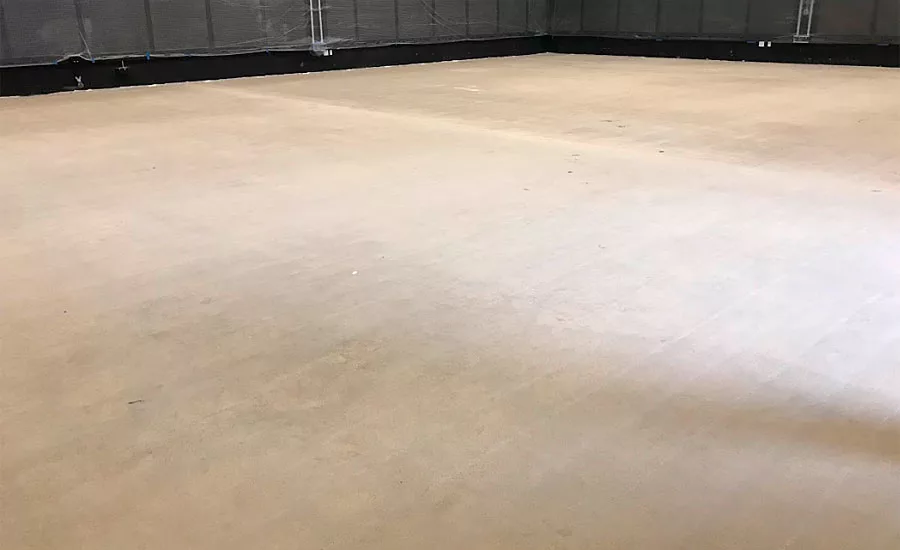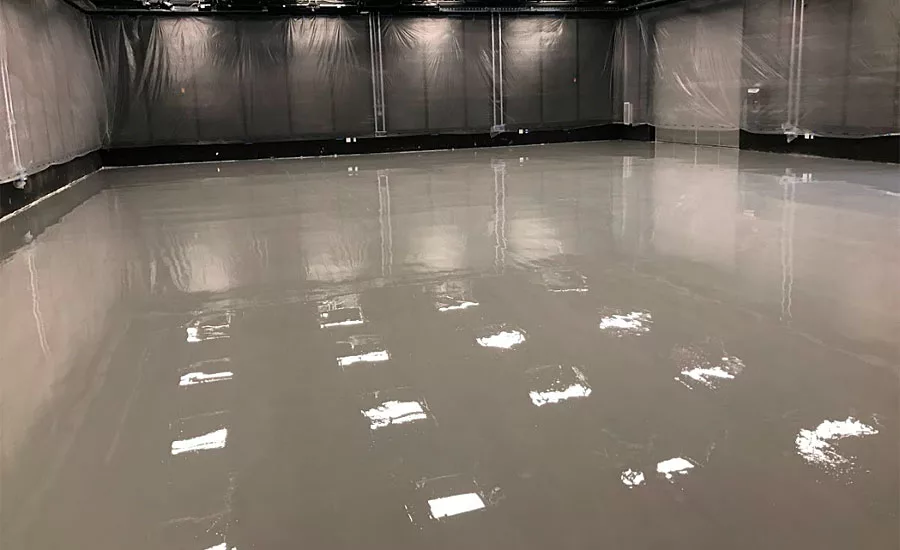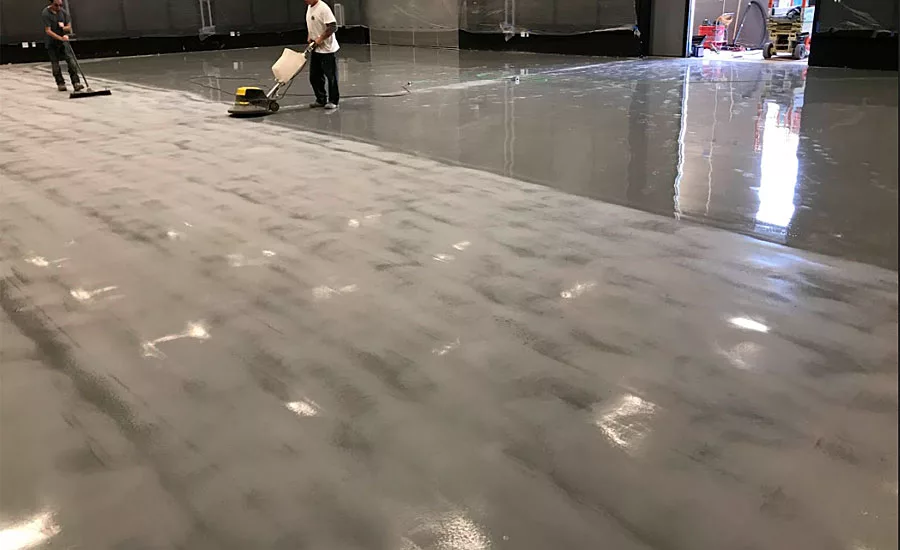Flooring Contractor Completes Studio Quality Floor for A&E Networks



A&E Networks is a television production company that produces shows such as The First 48, Longmire and Duck Dynasty. For this project, A&E hired High Performance Systems Corporation, an expert resinous flooring contractor, to install a resinous flooring system in one of their new 3,775 sq. ft. recording studios located in New York City.
Due to other trades working on construction of the studio, A&E had a very narrow window for when the resinous flooring system could be installed, which required High Performance to complete the project over the weekend. To complete the job, High Performance deployed a five-person crew, along with a certified OSHA compliance officer, Tom Pryor. To ensure worker safety, all workers wore safety glasses, latex gloves, and respirators - when dust was present.
Due to only having two days to complete the installation, the surface preparation needed to be completed during the other trades’ off hours on the weekdays. Before any surface preparation started, the walls all had to be taped off to prevent damage from surface preparation equipment or material splashing during the installation. To accommodate the thickness of the new floor, the next step was to create keyways at all termination points to ⅛” depth and tapered to create seamless transitions at desired heights and diamond cup wheels were used to edge beneath any permanent furniture or fixtures. Stephen Smedley, Vice-President of High Performance, explained that “If you didn’t fabricate keyways you would be above the door transitions and drains, creating a trip hazard.”
The existing floor was an uneven, high-density, burned concrete. The concrete had a high steel trowel finish that was dense due to it being installed with automated equipment that repeatedly finished the concrete to increase the strength of the slab. Smedley explained, “Why this is important is we wanted to prepare the surface for the coatings by getting a surface profile for the material to bond to and also to open up the porosity of the existing slab. When you have a burned slab or high dense slab you usually just want to make sure you are using really aggressive diamonds or in this instance we opted for shotblasting.” By shotblasting the floor, HPS was able to quickly get the manufacturer recommended CSP (concrete surface profile), which ensured a durable, long-lasting bond between the substrate and the coating. To ensure a dust-free environment Smedley used a S36 Pullman Ermator, a HEPA filtered vacuum, while shotblasting. High Performance then went back and patched any imperfections in the slab to get the floor as level as possible. Finally, the entire floor was vacuumed and solvent wiped to remove any dust particles still on the floor thereby, ensuring the resinous material would directly bond to the substrate.
Once the surface preparation was completed, the next step was to put a primer down so that the base coat chemically bonded to the substrate. The primer chosen was General Polymers 3569, which is a high solids, multi-purpose epoxy resin. This epoxy resin works well as a primer because it is not 100% solids so its viscosity allows it to penetrate the pores of the concrete slab to promote chemical adhesion between the base coat and the substrate. This material was applied using a ⅜” nap roller at a spread rate of about 225 sq. ft. per gallon.
One of A&E’s chief concerns was making sure the floor was level so that video recording equipment could glide on the surface without any significant deviations in height. To fulfill the client’s needs, High Performance installed a Trafficote Self-Leveling Slurry, which is a high-build, chemical-resistant protective self-leveling system. This high solids binder resin was mixed with a blend of silica and sil-co-sil, which is powdered silica, to thicken the coating system. Smedley explained that, “the difference between a coating and a slurry is that a slurry you are getting about 50-55 square feet per unit (meaning a mix) while with a typical coating system you are getting about 200-300 sq ft. a gallon.” The slurry was applied with a ⅛” v-notched squeegee at about 1/16” thickness, so it could self-level, at about 50 square feet per unit. After allowing the material to self-level for 10-15 minutes, the surface was lightly backrolled with a looped roller, to help smooth it out, and a spiny roller to release air.
Once the base coat cured, the entire surface was lightly buffed to remove any burrs. Smedley explained that, “While the material is still curing and wet it will act like a fly trap for the debris. So as a part of our process we buff in between coats, which only takes us an extra couple of hours to do but it ensures that we don’t have any loose hairs or debris in the coats.” To buff the floor HPS used a Clark machine with 100-200 grit screens.
The floor needed to be able to withstand constant UV damage from studio lights. An epoxy product was not chosen for the top coat because it would have quickly degraded and yellowed due to epoxy’s chemical structure becoming unstable when exposed to UV light. Instead, a water-based aliphatic urethane, General Polymers 4410, was used because it has excellent UV resistance and sheen protection, which ensures that the floor will be long-lasting and retain its color. Additionally, aliphatic urethanes provide scratch resistance, which is important for mobile recording equipment, and has low VOC content. Smedley explained, “The product needed to have no odor because above them were tenants who rented those spaces.” To apply the material a ¼” nap roller was used at a spread rate of about 250 square feet per gallon. A nap roller was used, instead of a squeegee, to prevent puddling, which can cause clouding, hazing, or possibly bubbling.
Thanks to the extra time taken to protect the walls and dust-free surface preparation, the studio walls were just as they were before the project started. In the end, A&E was left with a gorgeous, perfectly smooth, level floor with high sheen that will be sure to last for years to come. A&E was so pleased with the floor that they plan on reaching out to High Performance to bid on projects in the future.
Looking for a reprint of this article?
From high-res PDFs to custom plaques, order your copy today!







